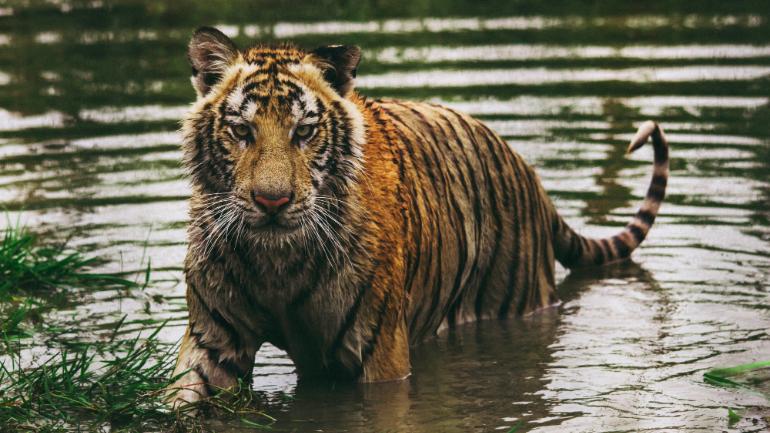Royal Bengal Tigers may not survive Climate Change: UN Report
According to a recent UN report, Climate change and rising sea levels may eventually wipe out ‘The Sundarbans’, which is one of world’s last and largest tiger strongholds. The studies of report rely on climate change scenarios developed by Intergovernmental Panel on Climate Change (IPCC) for its simulation models.
Key Findings of Report
- As per UN findings if greenhouse gas (GHG) emissions continued at current rate, the atmosphere would warm as much as 1.5C (above preindustrial levels) by 2040. This climate change would lead to rising sea level and existential threat to the Sundarbans.
- In 2010, World Wide Fund for Nature (WWF, a Non-governmental organization) estimated that sea level rise of 11 inches could reduce number of tigers in Sundarbans by 96% within a few decades.
- By 2070, there will be not be any suitable habitats of tiger remaining in Bangladesh Sundarbans.
- 70% of Sundarbans is just a few feet above sea level, thus faces grave threat due to climate changes. It is one of the prime habitats of Bengal tigers, who are among 500,000 land species whose survival is in question because of threats to their natural habitats due to climate change.
- Once the Sundarbans are flooded it may lead to increased confrontations (conflict) between humans and tigers, as the latter would stray outside their habitat in search of new land.
- Conservation efforts and fight against habitat loss in Sunderbans needs to begin immediately, as it could take about 20 years for these efforts to even start showing any results, but if action isn’t taken soon there won’t be any forest or tigers to save in 50 years.
About Sundarbans
- They are 10,000 square kilometres of marshy mangroves ecosystem shared between Bangladesh and India.
- They hosts world’s largest mangrove forest and a rich ecosystem that supports hundreds of animal species, including Bengal tiger.
- They are only mangrove forests in world where Bengal tigers are found.
About Bengal tiger (Panthera Tigris Tigris)
- It is national animal of India and Bangladesh.
- It found predominantly in India with some populations in Nepal, Bhutan, Bangladesh, China and Myanmar.
- Initiatives by India: As Bengal tiger species is the most numerous of all tiger subspecies (about 2,500 left in wild) Indian government undertakes various initiave to in a bid to conserve species. The Project Tiger launched in 1973 was India’s first-ever tiger conservation programme.
- IUCN Red List Status is endangered.
- Since early 1900s, hunting, poaching, habitat loss, and illegal trade of animal parts (to meet growing demand in Asia) have decreased global population of tigers from around 100,000 to fewer than 4,000 and puy the species at risk.
Month: Current Affairs - May, 2019


